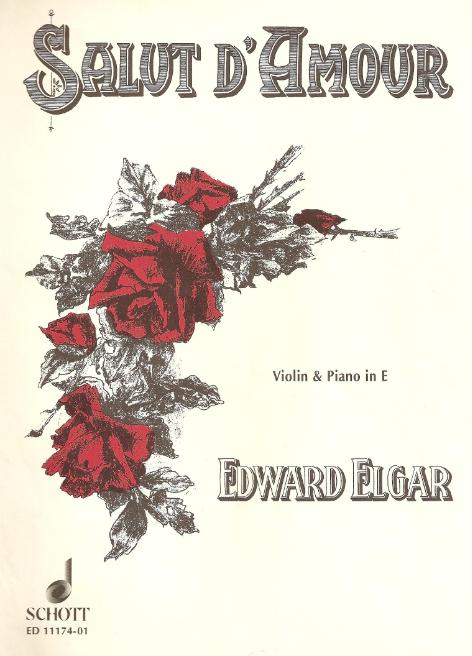 Alexander Glazunov
Alexander Glazunov (1865 – 1936)
A Russian composer, Glazunov successfully reconciled nationalism and cosmopolitanism in Russian music.
* Violin Concerto
* Saxophone Concerto
Karol Szymanowski
[ˌkarɔl ʂɨmaˈnɔfskʲi] (1882 – 1937)
A Polish composer and pianist.
* Stabat mater 聖母悼歌
(1860 – 1903)
An Austrian composer of Slovene origin, particularly noted for his art songs/lieder - top tracks
* Italian Serenade. - his best-known work, apart from songs
Max Bruch
(1838 – 1920)
A German composer and conductor, he is remembered today chiefly for three works:
* Violin Concerto No.1
* Scottish Fantasy - 6 minutes by Vanessa Mae
* Kol Nidrei - Part 1 - Part 2
César Franck
(1822 – 1890)A musician who worked in Paris during his adult life, he was born at Liège in what is now Belgium. He is mainly remembered for his
* Symphony in D minor
* Symphonic Variations (a compact piano concerto, with 6 variations and a finale)
* Piano Quintet
* Violin Sonata (one of the most popular Romantic)
* Panis angelicus
* Prélude, Choral, et Fugue (solo piano)
Vincent d'Indy
[vɛ̃ˈsɑ̃ dɛ̃ˈdi] (1851 – 1931)
A French composer and teacher.
* Symphonie sur un chant montagnard français / Symphony on a French Mountain Air
 Paul Dukas
Paul Dukas
(1865 - 1935)
A French composer, critic, scholar and teacher.
The Sorcerer's Apprentice / L'apprenti sorcier
It is the most performed and recorded of Dukas's works, because of its notable appearance in the Walt Disney 1940 animated film Fantasia.
Fantasia 2000 updates Fantasia 1940
* Fantasia 1940 & Fantasia 2000


Charles Villiers Stanford
(1852 – 1924)
Sir Charles Villiers Stanford was an Irish composer, music teacher ....
In 1882, aged 29, he was one of the founding professors of the Royal College of Music, where he taught composition for the rest of his life. From 1887 he was also the professor of music at Cambridge.
Among his pupils were rising composers whose fame went on to surpass his own, such as Gustav Holst and Ralph Vaughan Williams.
Hubert Parry
(1848 – 1918)
Sir Charles Hubert Hastings Parry was an English composer, teacher and historian of music.
As a composer he is best known for
* the choral song "Jerusalem",
* the coronation anthem "I was glad" - music starting at (0:32),
* the choral and orchestral ode "Blest Pair of Sirens",
* the hymn tune "Repton", which sets the words "Dear Lord and Father of Mankind".
Parry was a contributor to George Grove's massive Dictionary of Music and Musicians in the 1870s and 80s.
In 1883 Parry was professor of composition and musical history at the Royal College of Music, of which Grove was the first head. In 1895 Parry succeeded Grove as head of the College, remaining in the post for the rest of his life. Parry's influence on later composers is widely recognized.
Vincent d'Indy
[vɛ̃ˈsɑ̃ dɛ̃ˈdi] (1851 – 1931)
A French composer and teacher.
* Symphonie sur un chant montagnard français / Symphony on a French Mountain Air
 Paul Dukas
Paul Dukas (1865 - 1935)
A French composer, critic, scholar and teacher.
The Sorcerer's Apprentice / L'apprenti sorcier
It is the most performed and recorded of Dukas's works, because of its notable appearance in the Walt Disney 1940 animated film Fantasia.
Fantasia 2000 updates Fantasia 1940
* Fantasia 1940 & Fantasia 2000


The Sorcerer's Apprentice (2010 film)
Charles Villiers Stanford
(1852 – 1924)
Sir Charles Villiers Stanford was an Irish composer, music teacher ....
In 1882, aged 29, he was one of the founding professors of the Royal College of Music, where he taught composition for the rest of his life. From 1887 he was also the professor of music at Cambridge.
Among his pupils were rising composers whose fame went on to surpass his own, such as Gustav Holst and Ralph Vaughan Williams.
Hubert Parry
(1848 – 1918)
Sir Charles Hubert Hastings Parry was an English composer, teacher and historian of music.
As a composer he is best known for
* the choral song "Jerusalem",
* the coronation anthem "I was glad" - music starting at (0:32),
* the choral and orchestral ode "Blest Pair of Sirens",
* the hymn tune "Repton", which sets the words "Dear Lord and Father of Mankind".
Parry was a contributor to George Grove's massive Dictionary of Music and Musicians in the 1870s and 80s.
In 1883 Parry was professor of composition and musical history at the Royal College of Music, of which Grove was the first head. In 1895 Parry succeeded Grove as head of the College, remaining in the post for the rest of his life. Parry's influence on later composers is widely recognized.
Source: Wikipedia








































